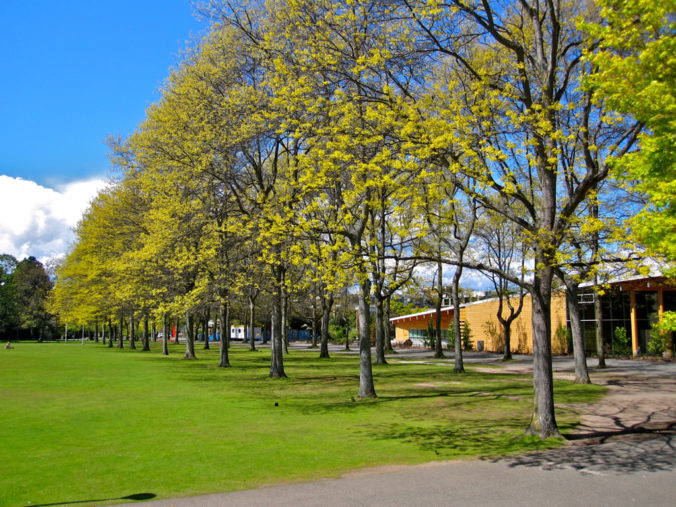-
What does it mean to network using social media?
Social media is a “hybrid” media form that has never appeared in human history: it is not only a tool for interpersonal communication like the telephone, but also a platform for mass communication like television. Before the emergence of social media, people could only get information unilaterally from the Internet, and are not able to discuss a hot topic interactively. After having Blog, Twitter, and other social media accounts, the masses play more and more important roles have become more and more in the network.
This hybrid form, coupled with a huge number of users (the total number of monthly active users of Facebook, Instagram, WhatsApp, and Messenger has exceeded 3 billion (Clement,2020)), so that social media exhibits its huge connectivity. On social media platforms, the interaction between people and people, people and information has become possibility. However, this interaction also faces unprecedented challenges to network. At first, people regarded Facebook’s founder Zuckerberg as a young hero who changed the world, and Zuckerberg also ambitiously wanted to connect the whole world; later, due to the proliferation of security, privacy, false information, opinion substitution and other issues, Zuckerberg has almost become a public enemy.
In short, social media has undoubtedly aroused more people’s interest in using network and enriched the expressions of the network, but at the same time, social media also make people feel distrustful of the network because of the flood of false news.
-
How do people learn engage using mediated platforms?
Due to the rapid development of the Internet and social networks, there are many mediated platforms that can help us learn. There are search sites for academic resources such as google scholar, and online learning website such as Mooc. Also, these platforms will have many interactive quizzes to ensure that people have mastered the knowledge. Also, users in social media platforms can learn some new knowledge that haven’t heard before. For example, there is a largest social media platform in China called Weibo. A user there called “丁香园 (Lilac garden)” who is a doctor posted plenty of medical related knowledge during the COVID-19. Also, using platforms, people can share different ideas based on different experience.
-
How are we motivated to participate in networked publics?
The communality of networked publics motivates us (Rajagopal, et al., 2011). We can easily find an interesting topic (tag) and join a group from Blog or Facebook. Those help us build connection with networked publics and start to share ideas. Also, the network has always been a tool for searching information, and networked public helps us find what we need faster. When you post a question on Quora, lots of people reply you. Of course, you have to identify which answer is right. In my opinion, networked publics will attract people to participate because they have “like and comment” mechanism. Everyone is eager to be praised so they share photos and comments in social media platforms. Also, they are willing to write popular science articles to publics.
-
What are the risks & rewards of public communications?
As I mentioned in the first question, one of the risks of public communications is the privacy. Even almost every platform has “Terms and Conditions” that users need to agree, people’s privacy still cannot be fully protected. Some social medias require registers give permission to album and locations first otherwise they are not able to access the platform. Also, many people choose to target specific group when posting their opinions (Lyon, 2001). If the website has technical problems, their choices may become invalid and the content will be made public to everyone. Another risk of public communications is “homogenization”. Because of social networks and public communication, art and people’s life have a trend of homogeneity. When you are walking on the street, you can see many people wear similar clothes and listen same music since the entire world absorb the same cultural affects from public communications. It reduces cultural diversity, giving us with fewer inspirations.
However, public communications keep us connected. For example, when the epidemic came, the entire world got news in a short time and offered help. Without public communication, it is difficult for us to get information from other places rapidly. Besides, it’s the mouth of voiceless. From social media, I can see a lot of stories of people in difficult conditions. Those stories or phenomenon spread across the platform and attract the attention of the government. A story impresses me is that a father found his daughter who had been kidnapped for 20 years through social media. Public communication will lift up a single voice that may otherwise disappear unheard.
Reference
Clement, J. 2020, August 10 .Monthly active users of any Facebook product 2020. https://www.statista.com/statistics/947869/facebook-product-mau/
Rajagopal, K., Joosten-ten Brinke, D., Van Bruggen, J., & Sloep, P. B. (2011). Understanding personal learning networks: Their structure, content and the networking skills needed to optimally use them. First Monday, 17(1). https://doi.org/10.5210/fm.v17i1.3559
Lyon, D. (2001). Networked privacy. In Surveillance society: Monitoring everyday life (pp. 348-250). McGraw-Hill Education (UK). https://ojs.library.queensu.ca/index.php/surveillance-and-society/article/view/networked/networked



Recent Comments